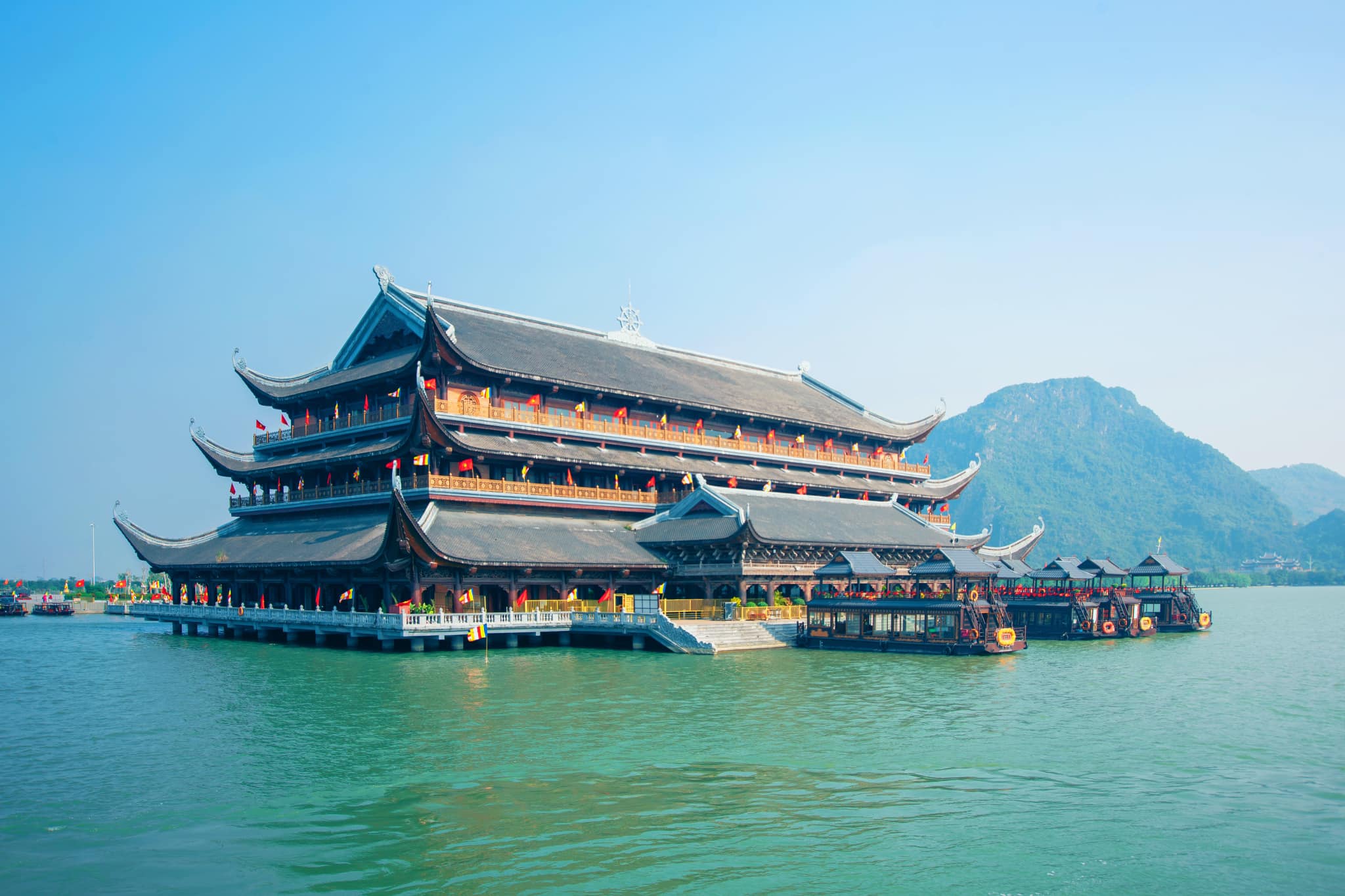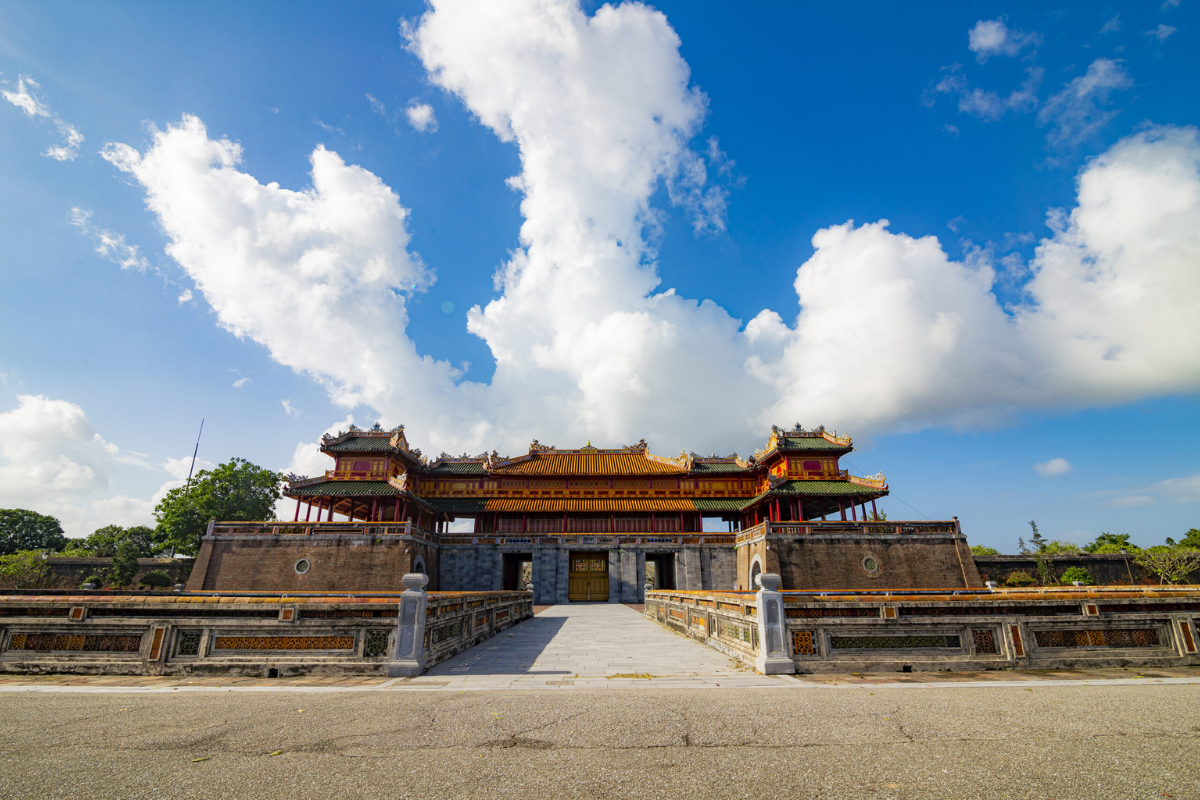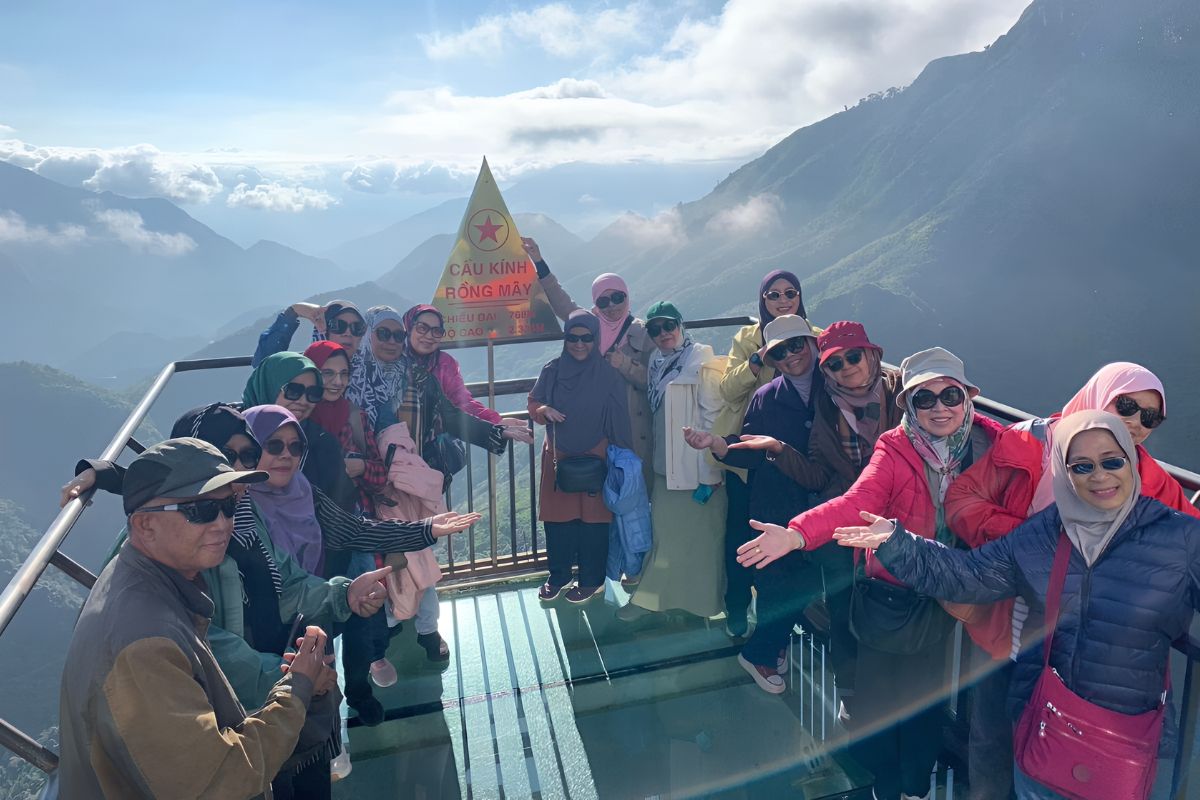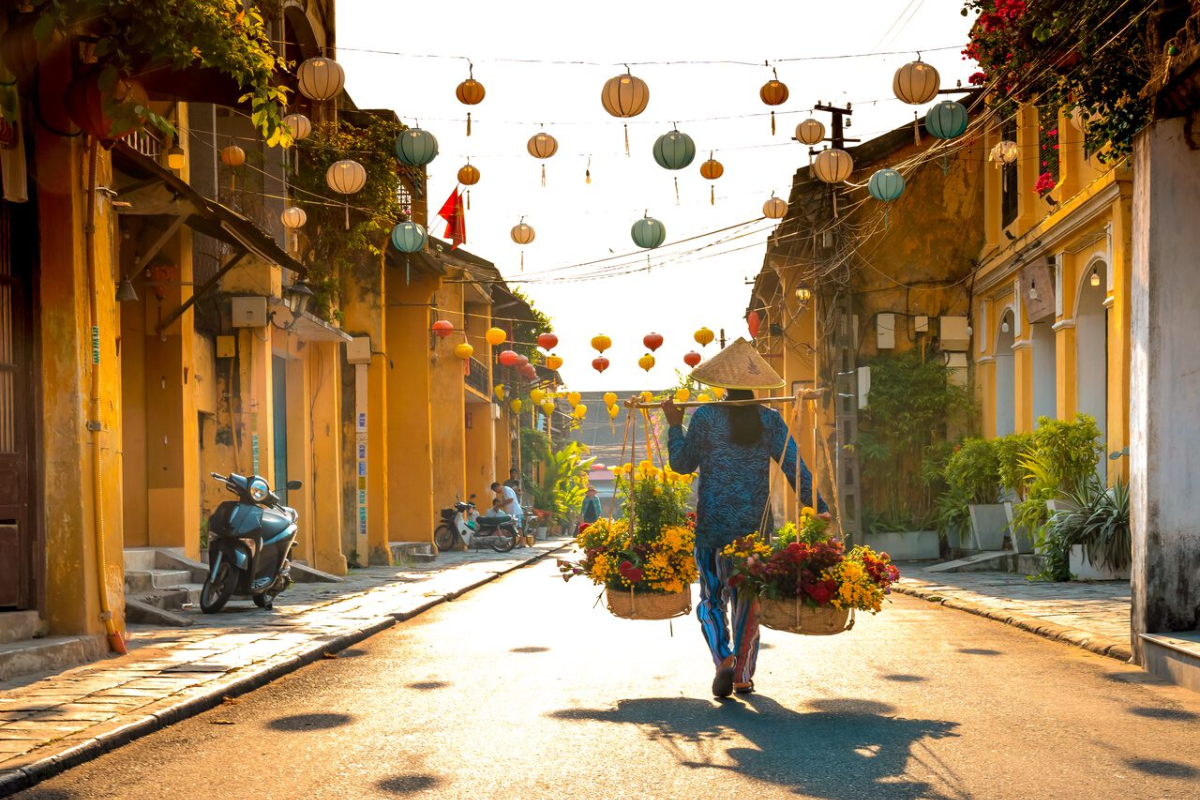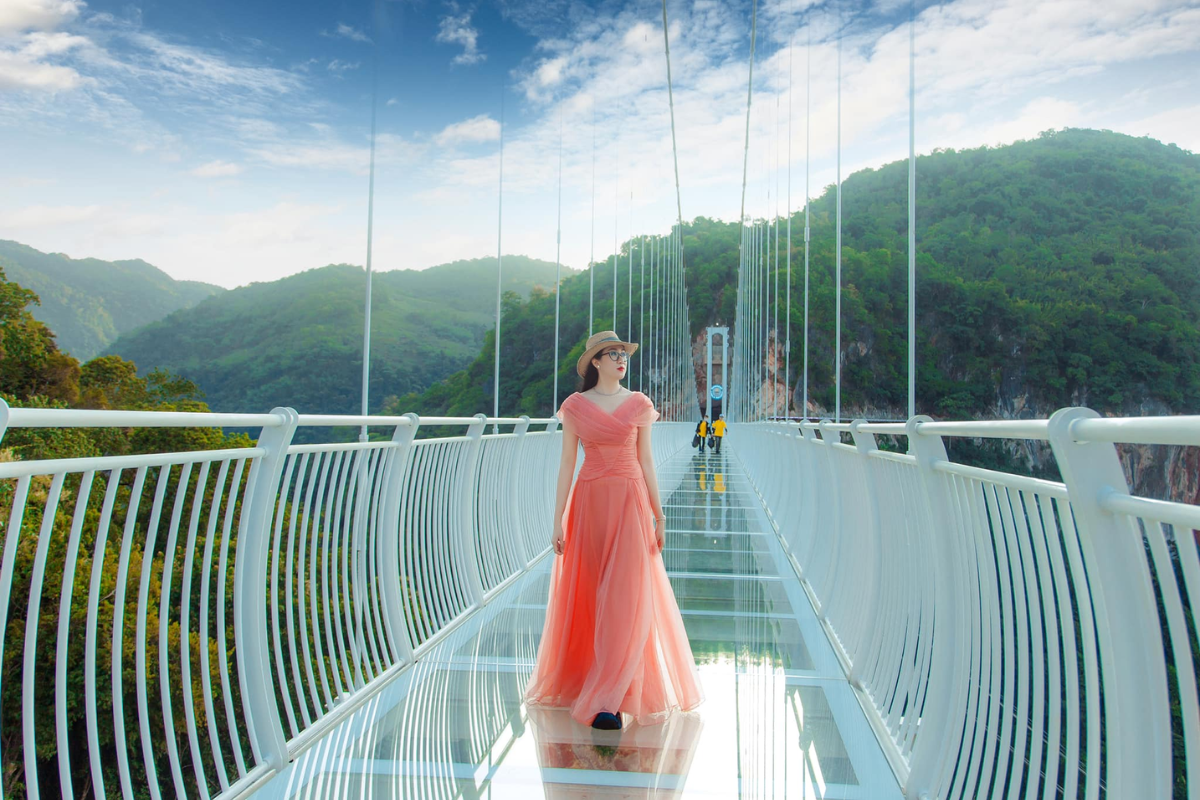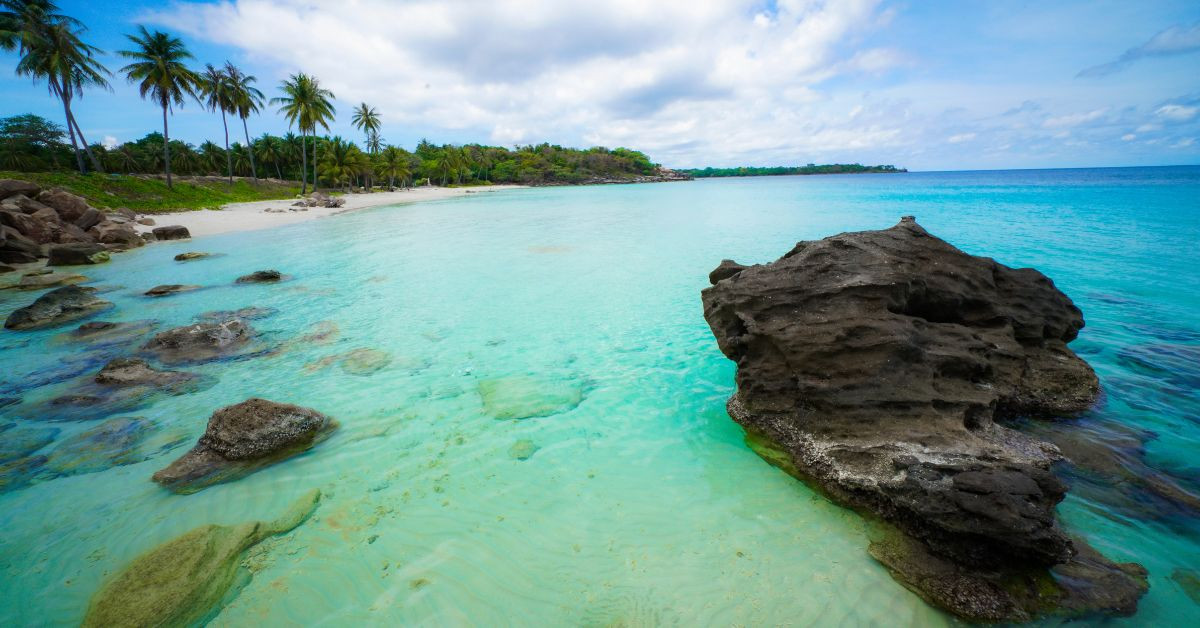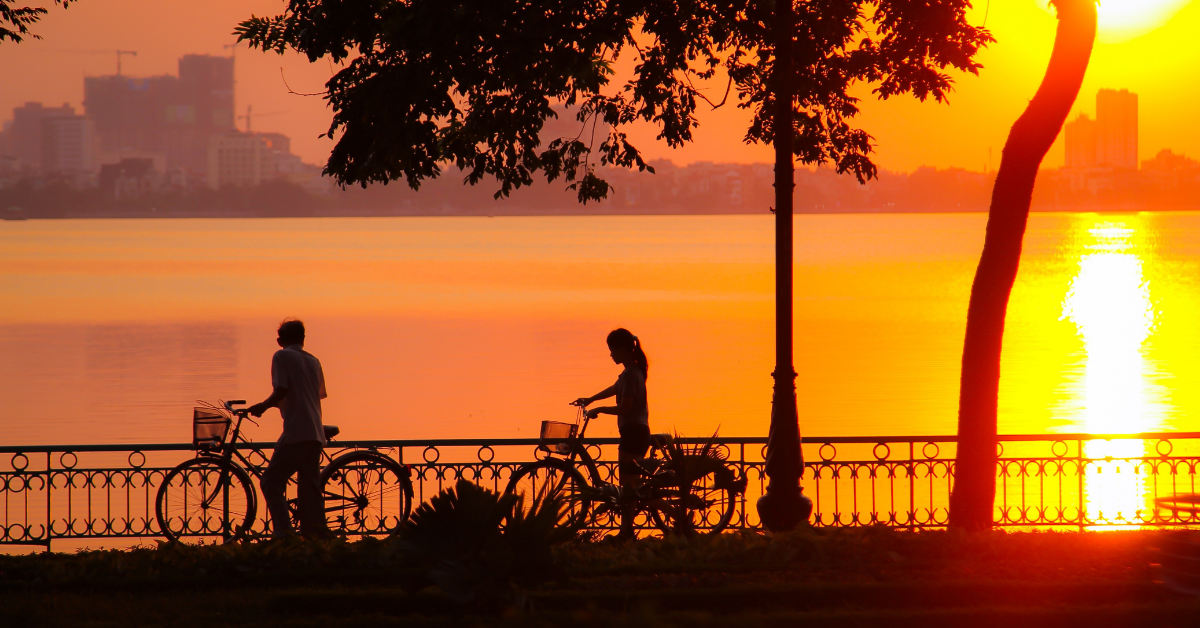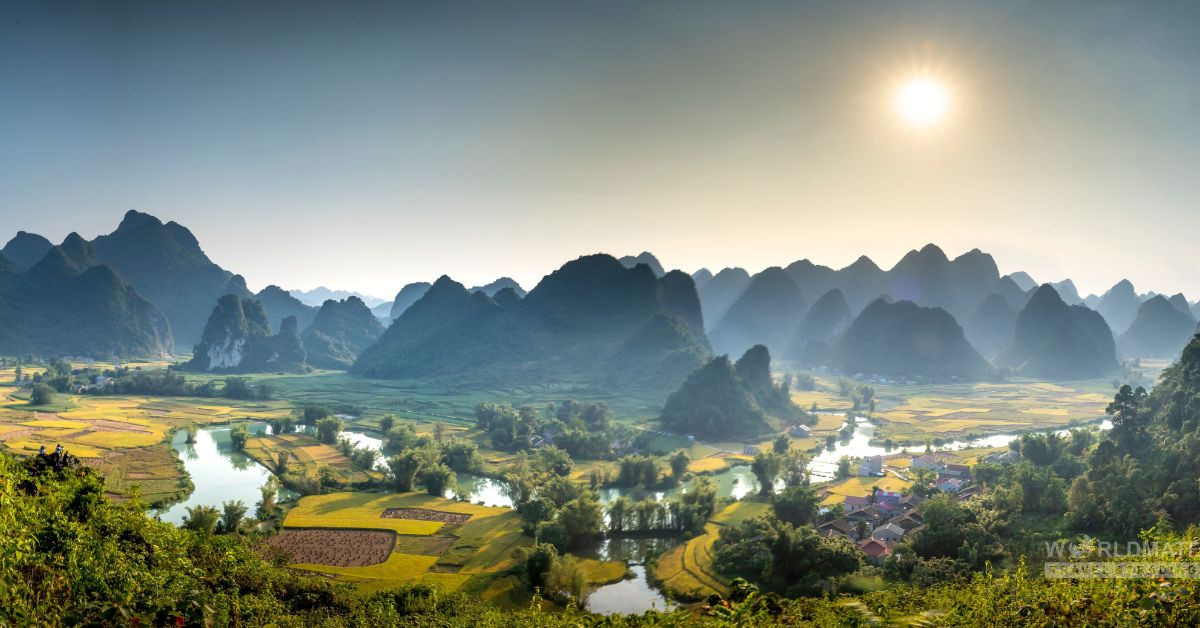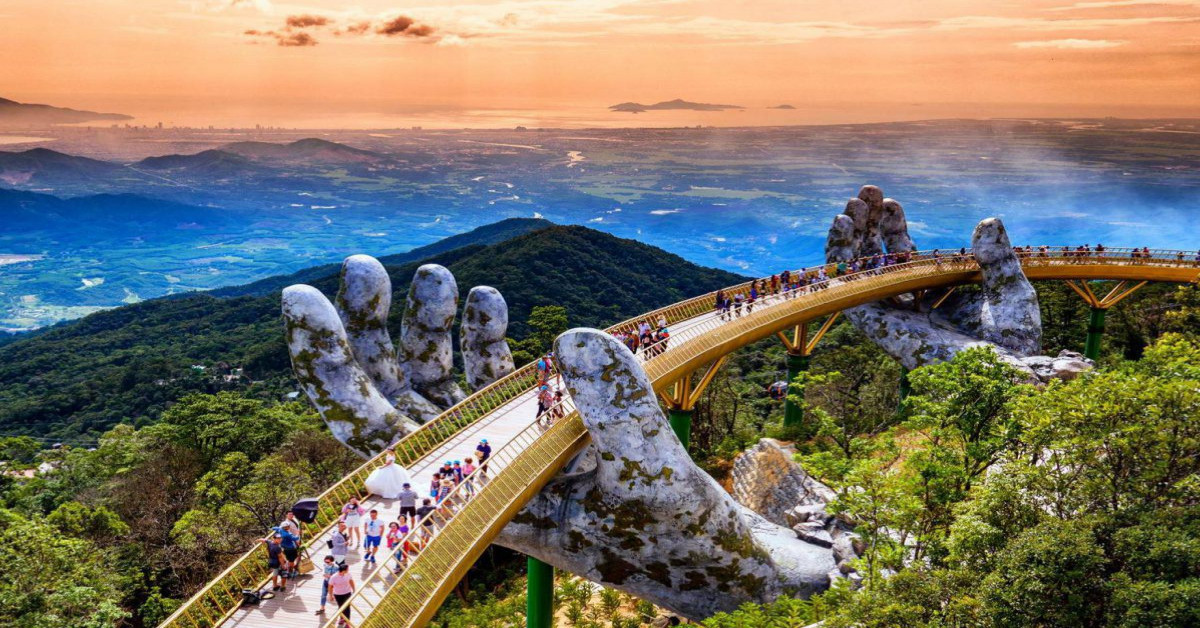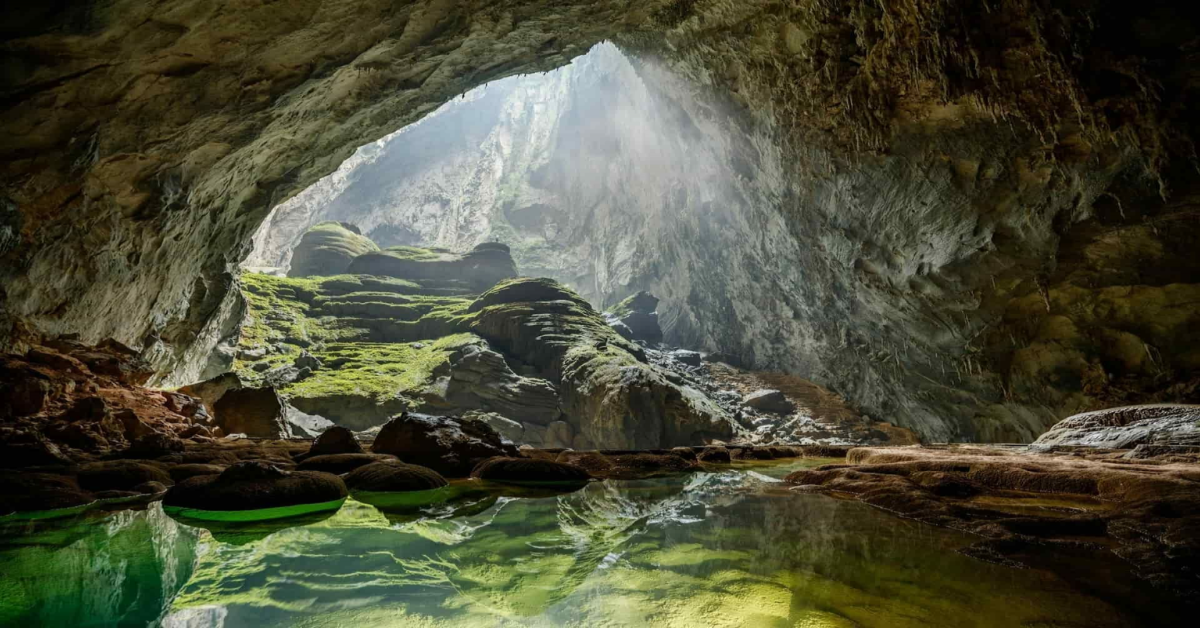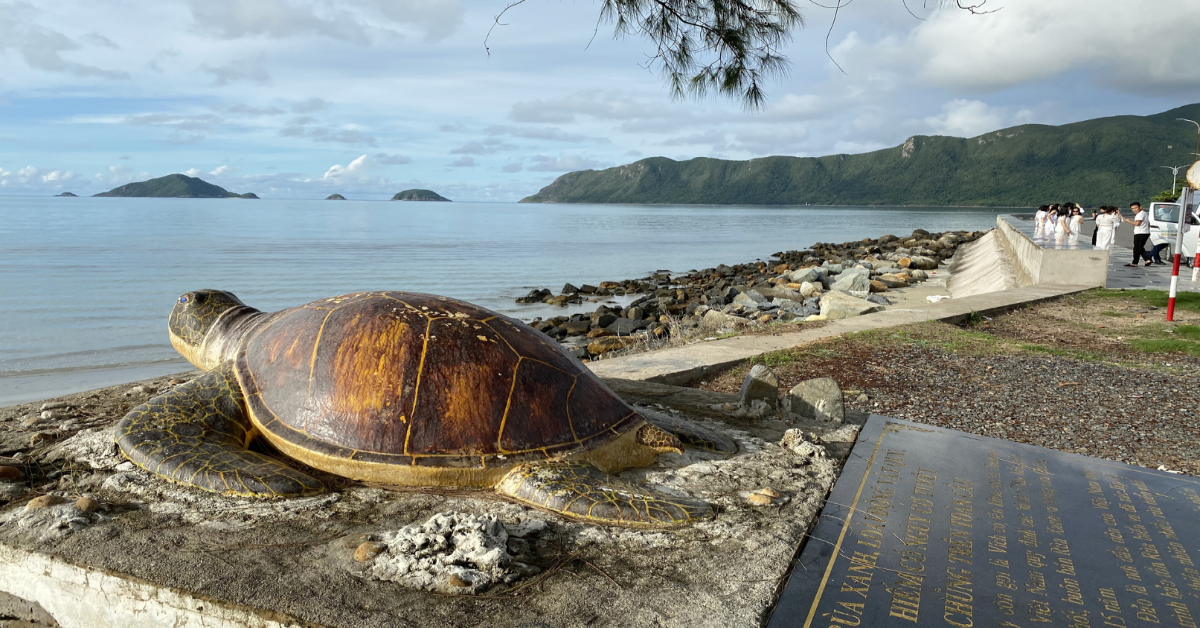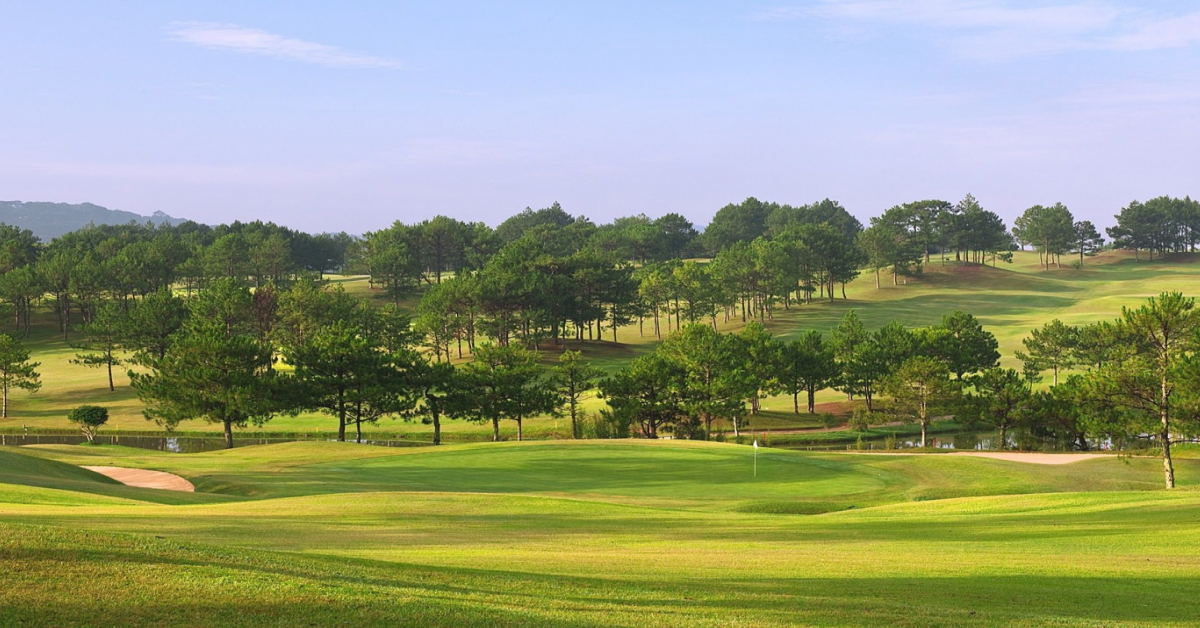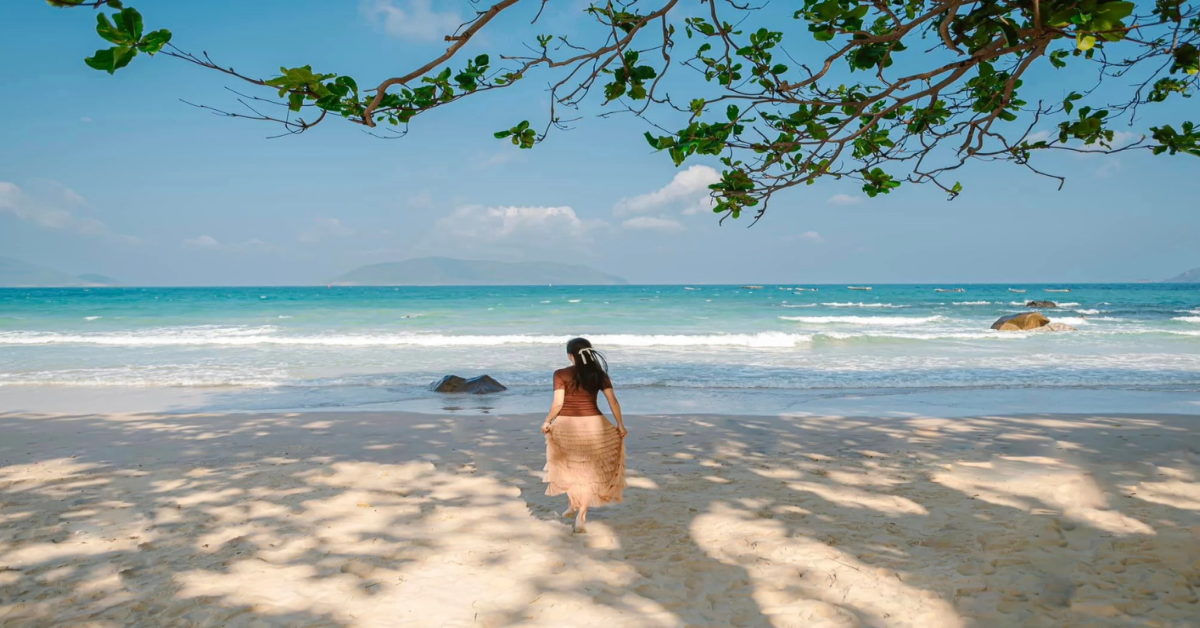13 Must-Visit Tourist Attractions in Hoi An
Hoi An, which translates to “peaceful meeting place,” is a coastal city in Vietnam with a rich history of spice trading dating back to the 10th century. Due to its strategic location, Hoi An became a major trading port with China and attracted commerce and settlers from Portugal, the Netherlands, and Japan. By the 18th century, it was considered the premier merchant destination in Asia.
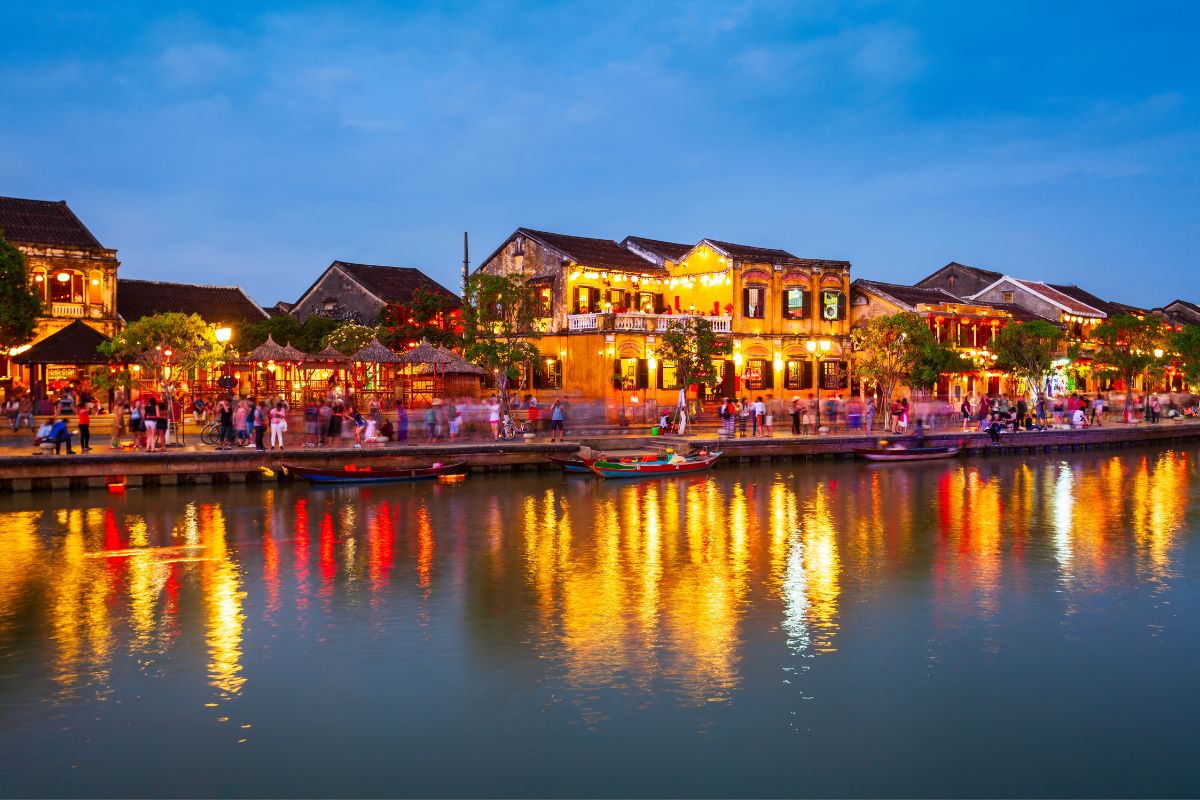
The ancient history of Hoi An is still very much alive in the attractions and narrow alleyways of the Ancient Town, where medieval two-story wooden buildings remain frozen in time. Getting lost on the streets of Hoi An is one of the best things to do when visiting—you’ll discover traditional markets, artisans selling their wares, and some of the best street food in Vietnam.
For more ideas on places to visit in one of Vietnam’s oldest cities, see our list of must-visit tourist attractions in Hoi An.
1. An Bang Beach
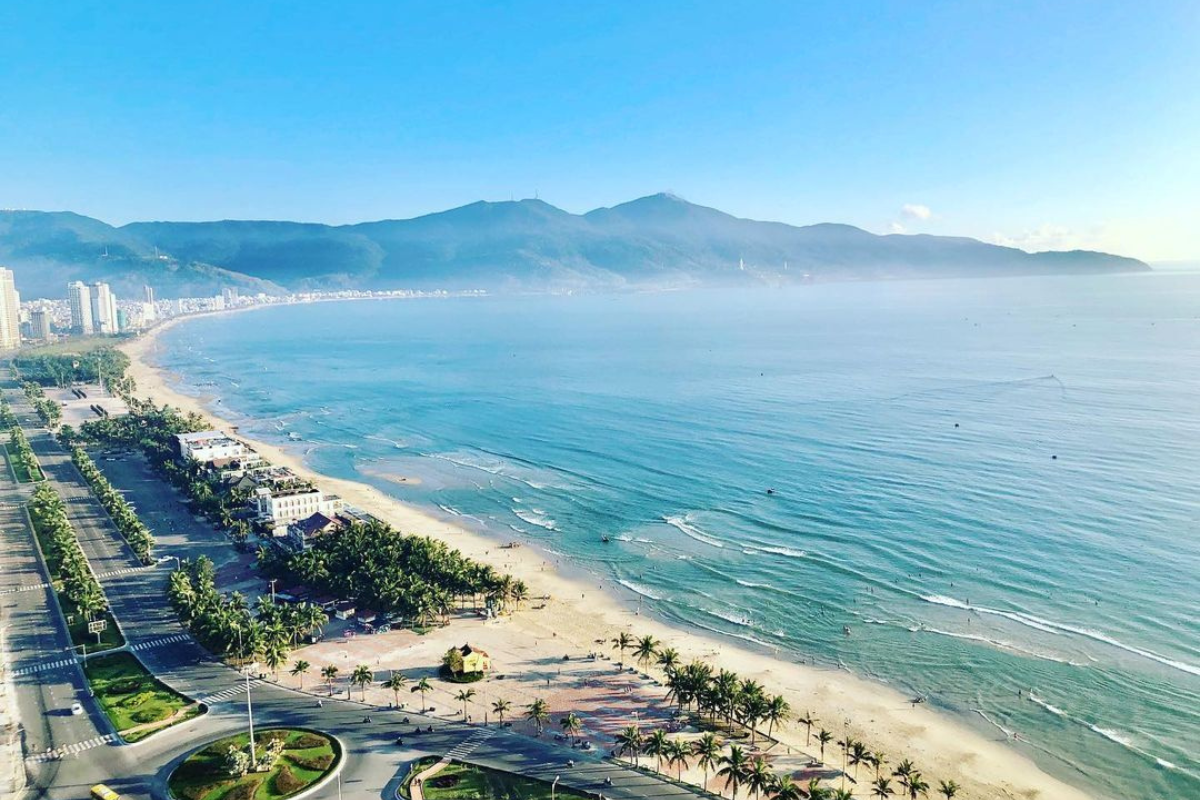
An Bang, Hoi An’s whitest and softest beach, is just minutes from the town center. It offers stunning open views over the ocean, with the Cham Islands dotting the turquoise waters in the distance.
While the shoreline boasts plenty of resorts, restaurants, and entertainment options, the beach itself remains quiet and unspoiled. Some of the best seafood in the area comes from small shacks set on the sand, many of which also rent out sun beds if you prefer not to sit at one of their tables.
An Bang offers excellent conditions for surfing between September and March, attracting a larger foreigner presence during these months. Visitors can also try paddleboarding and parasailing or simply enjoy a swim in the clear waters.
Locals typically arrive as the sun begins to set, and beach sellers offering souvenirs are rare, making this the perfect beach for sun worshippers looking to relax and enjoy the sound of the crashing waves.
2. Cua Dai Beach
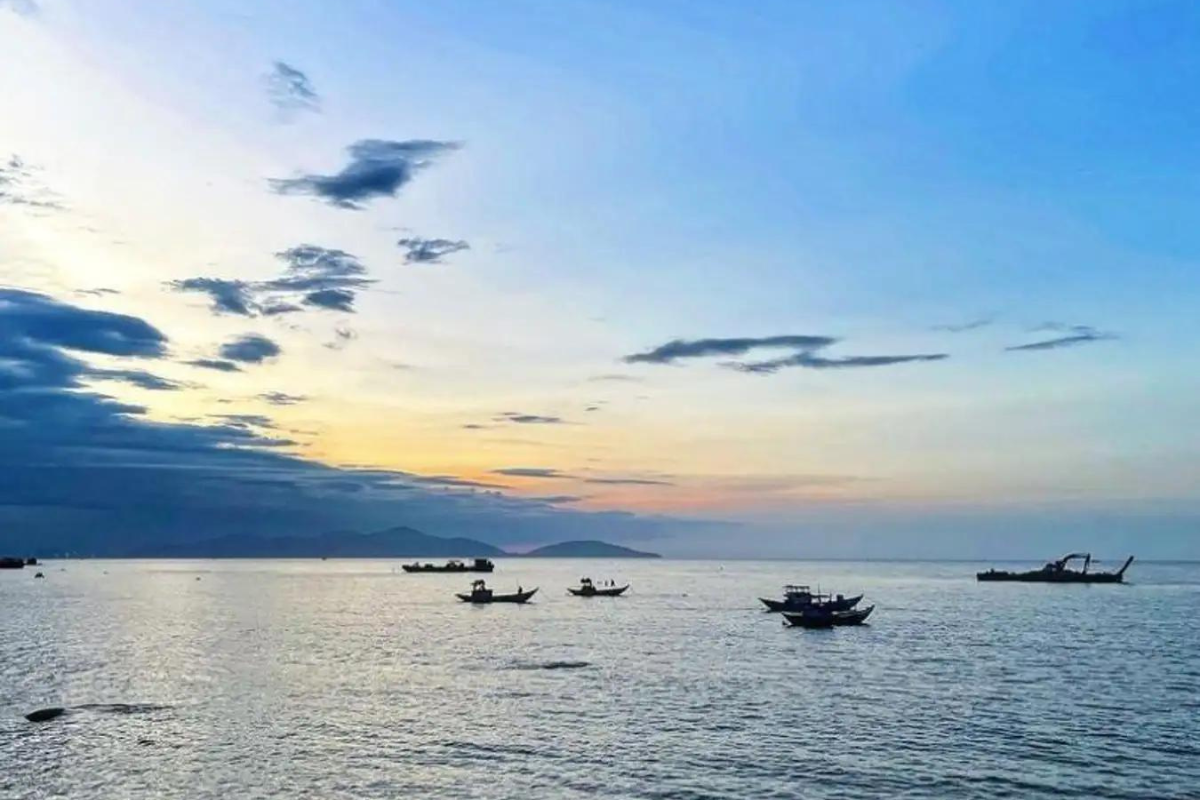
White sands sloping into turquoise waters make Cua Dai one of the most popular and lively beaches in the Hoi An area. Located just five kilometers from town, Cua Dai offers soft blue waves perfect for swimming.
While there aren’t many water sports available, visitors can rent a sun lounger, enjoy a meal at a seaside restaurant, or grab a cold drink or souvenir from the many sellers walking up and down the beach.
Even during the high season (April to August), the beach isn’t busy on weekdays. If you arrive early in the morning, you’ll likely share it with a few long-tail fishing boats heading out to sea. The palm-fringed coastline offers plenty of shaded spots if you arrive during the hotter part of the day.
The beach has been fighting erosion since a tsunami hit the coast in 2004, so you might encounter machines and workers at some corners of the beach throughout the year. Remember, they’re here to keep the beach beautiful, so just find another spot to enjoy the sun and sea.
3. Phung Hung House
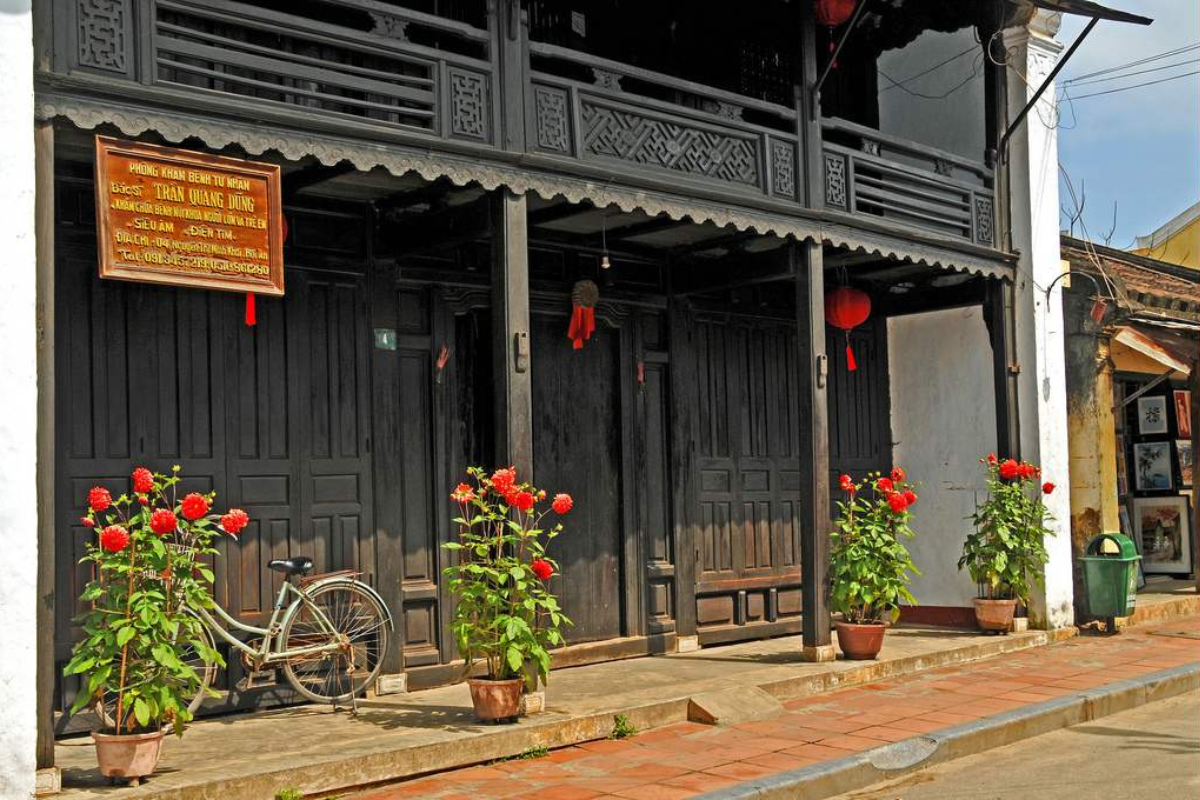
Perhaps the most famous building in Hoi An, the Phung Hung House dates back over 200 years. Originally a merchant house for a family selling spices, silk, and chinaware, the house features colorful hanging lanterns, dark red and brown colors, a Japanese-style roof, and bright wall hangings with Chinese inscriptions.
The house itself is somewhat of an architectural marvel—the 80 columns that support the structure are set on special lotus-shaped bases that protect them from moisture and termites. The back of the house, which has a balcony right over the canal where goods could be received by boat, can be completely closed off in case of a flood, protecting the rest of the house from water damage.
Although the shop that once occupied the first floor of the house is no longer there, you can still find little details from it here and there—from the handicrafts on tables and windows to the altar that honors the owner’s ancestors and the Yin/Yang tiles harmonizing the house.
4. Hoi An Ancient Town
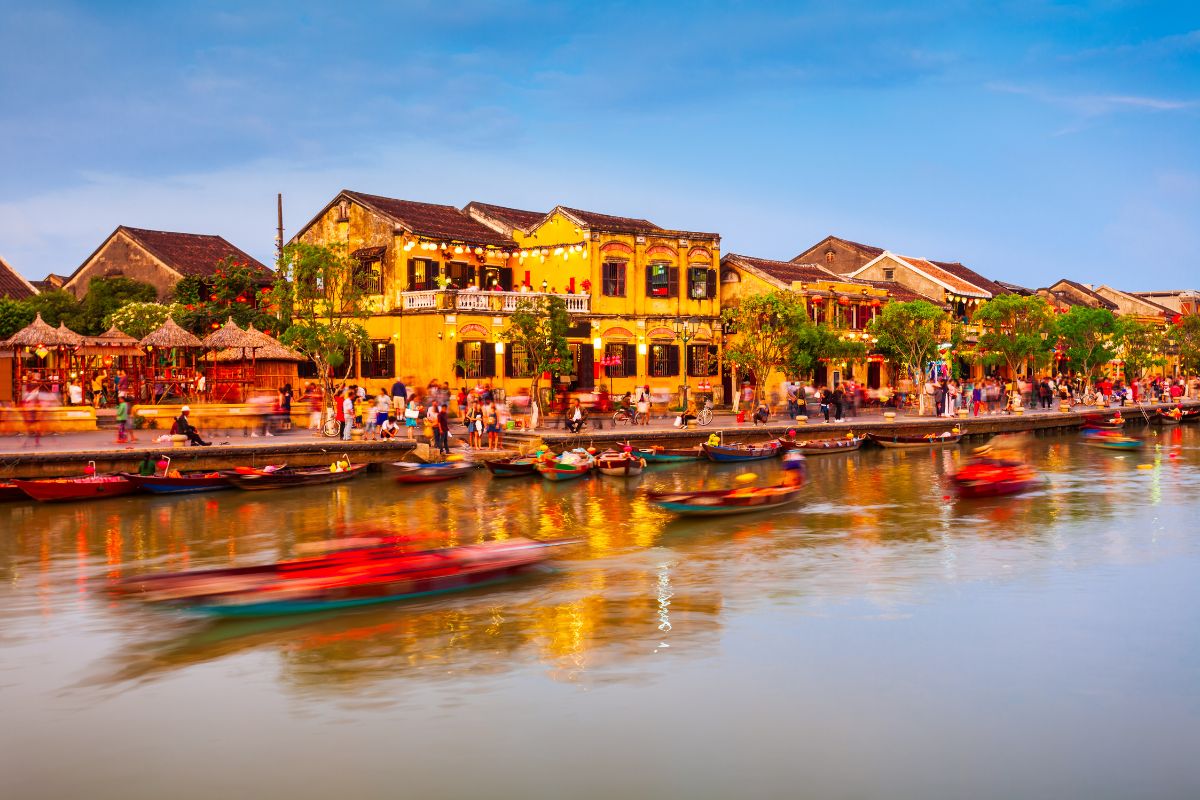
The entire old center of Hoi An is now a designated UNESCO World Heritage Site, a melting pot of cultures, architecture, and monuments in one of the busiest ancient trading ports in Southeast Asia.
Over 30 hectares and 1,107 timber-frame buildings make up the well-preserved historical center, with a mix of religious buildings, monuments, and family homes. Rows of beautiful wooden and brick houses from the 15th to 18th centuries line the pedestrian streets here. The covered Japanese bridge is also part of it.
Walking through the old streets of Hoi An is like traveling back in time. Chinese and Japanese influences are evident, with gilded red Chinese characters on rooftops and pagoda-like buildings lining the canal.
There are plenty of places to eat and shop in the Ancient Town, as well as many spots to watch the sunset over the old buildings.
5. Fukian Assembly Hall
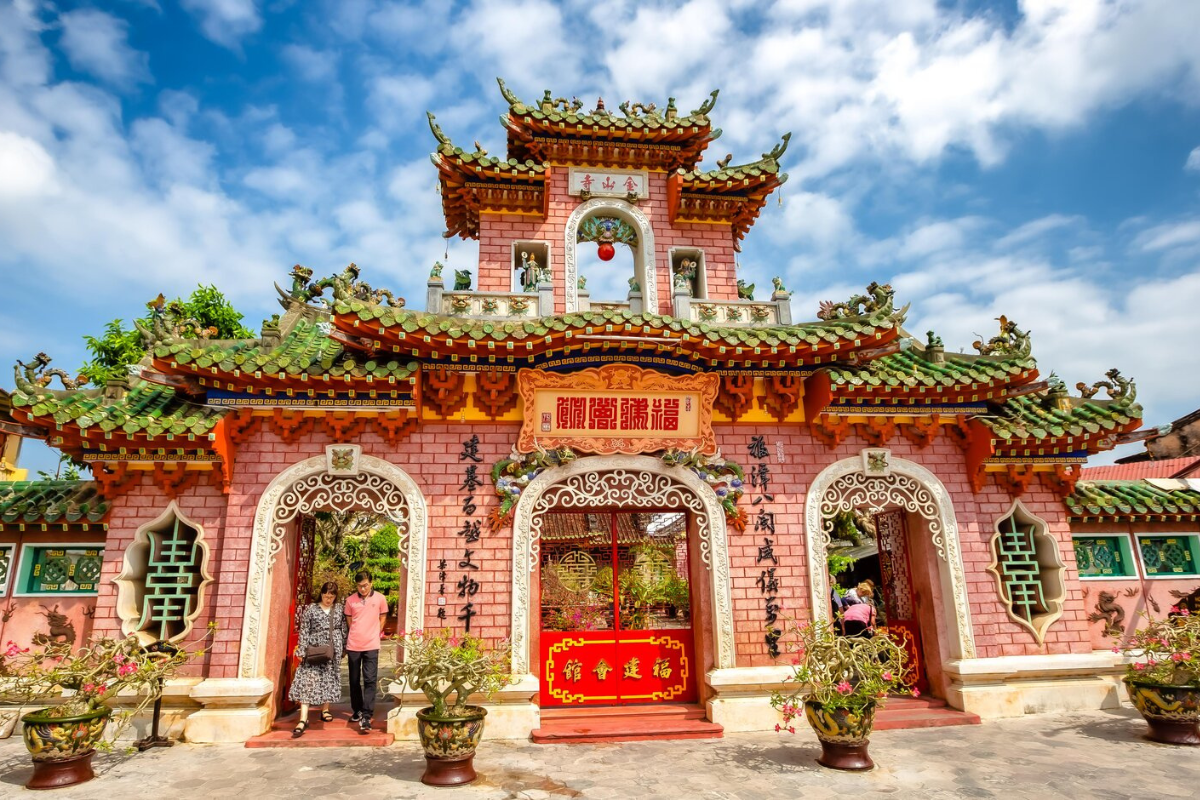
Originally a pagoda, this building complex has undergone numerous transformations and restorations since its construction in the 17th century. It was eventually converted into an assembly hall for the Fujian ethnic group, the largest ethnic minority in Vietnam. Traditional assembly halls, common in China, serve as both temples and cultural centers where events and festivals are held.
At the Fukian Assembly Hall, colorful and ornate dragons, gardens, and gates dominate the space. Mythical animals—including dragons and a phoenix—mix with turtles, fish, and other creatures in the design around the many bells and statues that occupy the main hall.
Look for the statue of Avalokitesvara (the bodhisattva who embodies the infinite compassion of the Buddha), incense burners, and another large statue of Thien Hau Holy Mother, the deity that blesses and helps sailors and fishermen. A small chamber in the back contains figures of important Fujian clan leaders.
6. Hoi An Museum
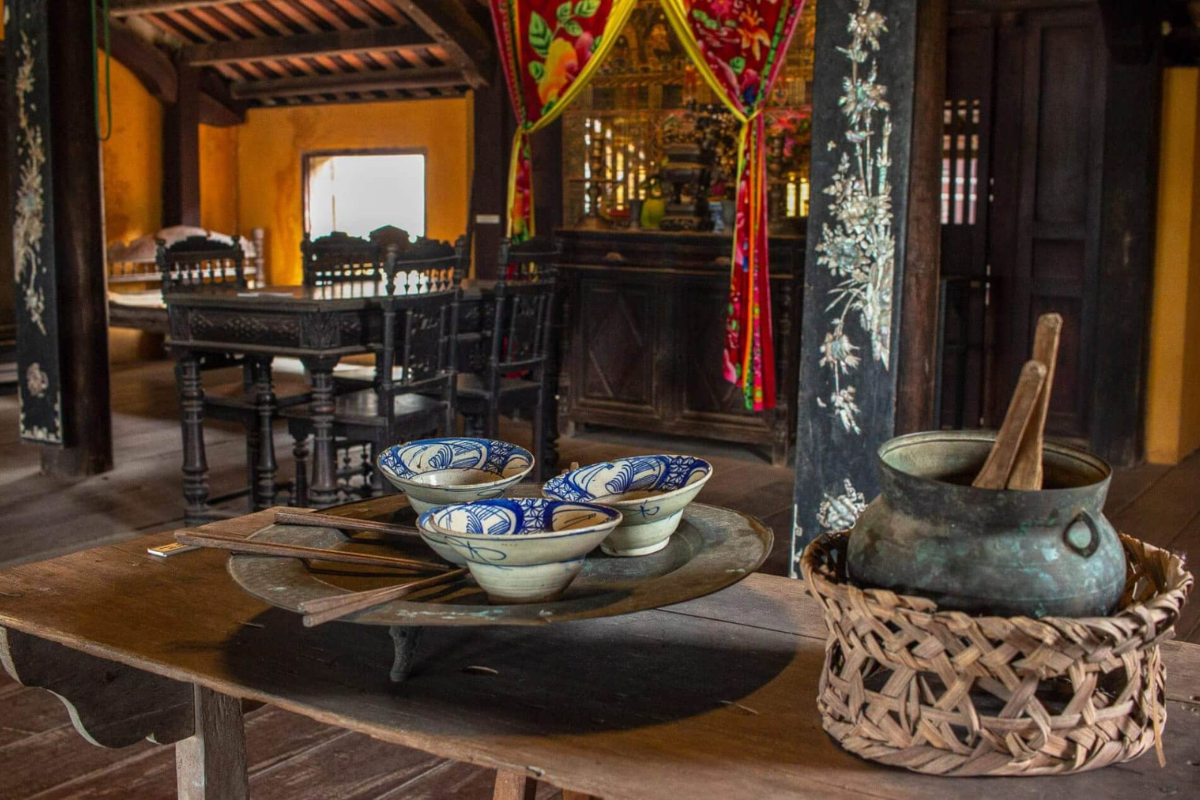
Also known as the Museum of History and Culture, this small, unassuming attraction is housed on the same grounds as the Quan Yin Pagoda. Originally built in the 1600s for the Goddess of Mercy, Guan Yin, the temple remains beautiful despite the centuries slowly erasing some details.
Both the temple and the museum are worth a visit to gain a better understanding of the history of Hoi An and the historical and religious events that have shaped the city over 2,000 years.
The museum’s collection is divided into four sections, covering the history of Hoi An as a trading port, through the Vietnam War, and the city’s rebirth until modern times. The last section focuses on art depicting life in Hoi An through the years.
The collection of objects here is slightly chaotic, with bells sitting next to ceramics, Cham sculptures, and maritime artifacts. Thankfully, there is enough information in English to help you understand the pieces. The top floor of the museum offers breezy open views over the old town.
7. Thanh Ha Pottery Village
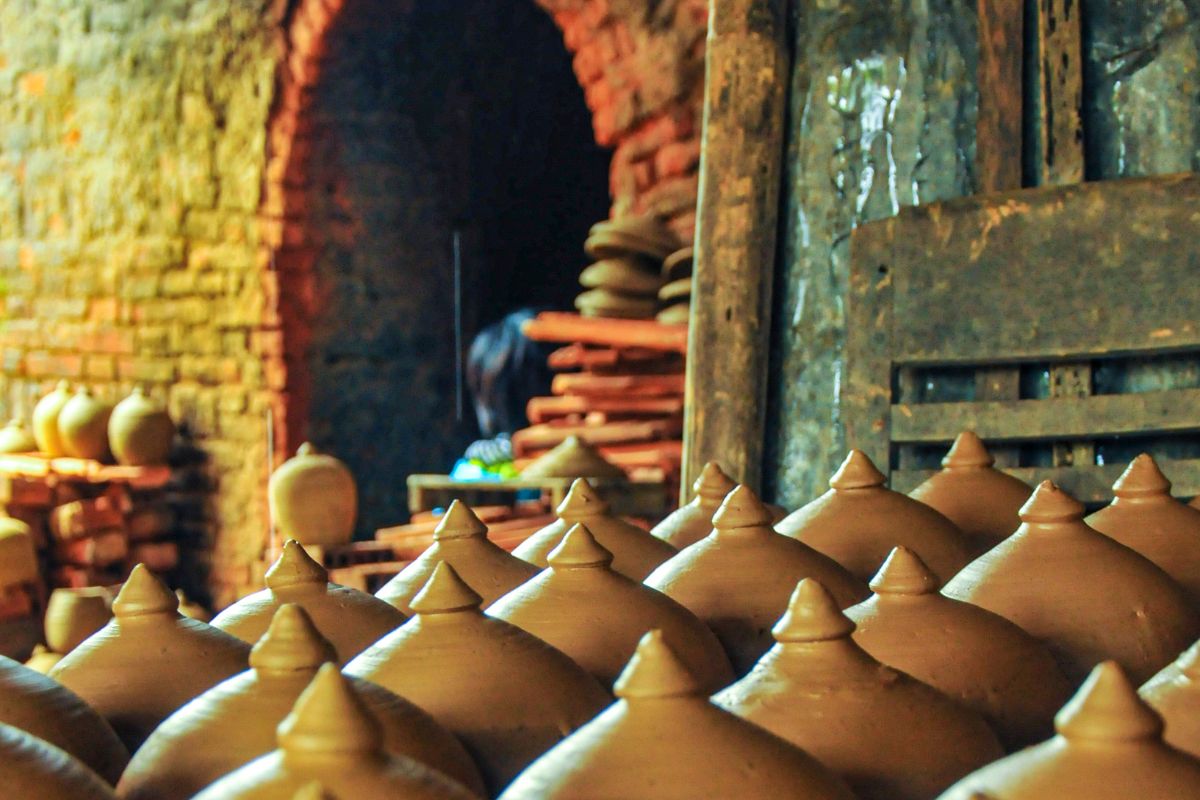
Whether you’re looking to buy some pottery or ready to get your hands dirty and learn how to shape pottery yourself, the beautiful Thanh Ha Pottery Village won’t disappoint. The village dates back to the 15th century and was originally created to supply decorative pottery for the Imperial City of Hue.
Over the centuries, the village has developed techniques that allow crafters to create everything from bricks and tiles to bowls and pots—all by hand in a stunning rainbow of pinks, greens, and blacks. Today, Hoi An’s ceramics are sold worldwide.
While the village is a popular tourist attraction, it has remained very low-key. As you walk through the narrow pathways around the colorful clay homes, you’ll see villagers producing pottery for sale. When you see someone working on a potter’s wheel or baking the finished product, you’re witnessing an ancient art in progress. Everything you see is for sale at local, not tourist, prices.
8. Tra Que Vegetable Village
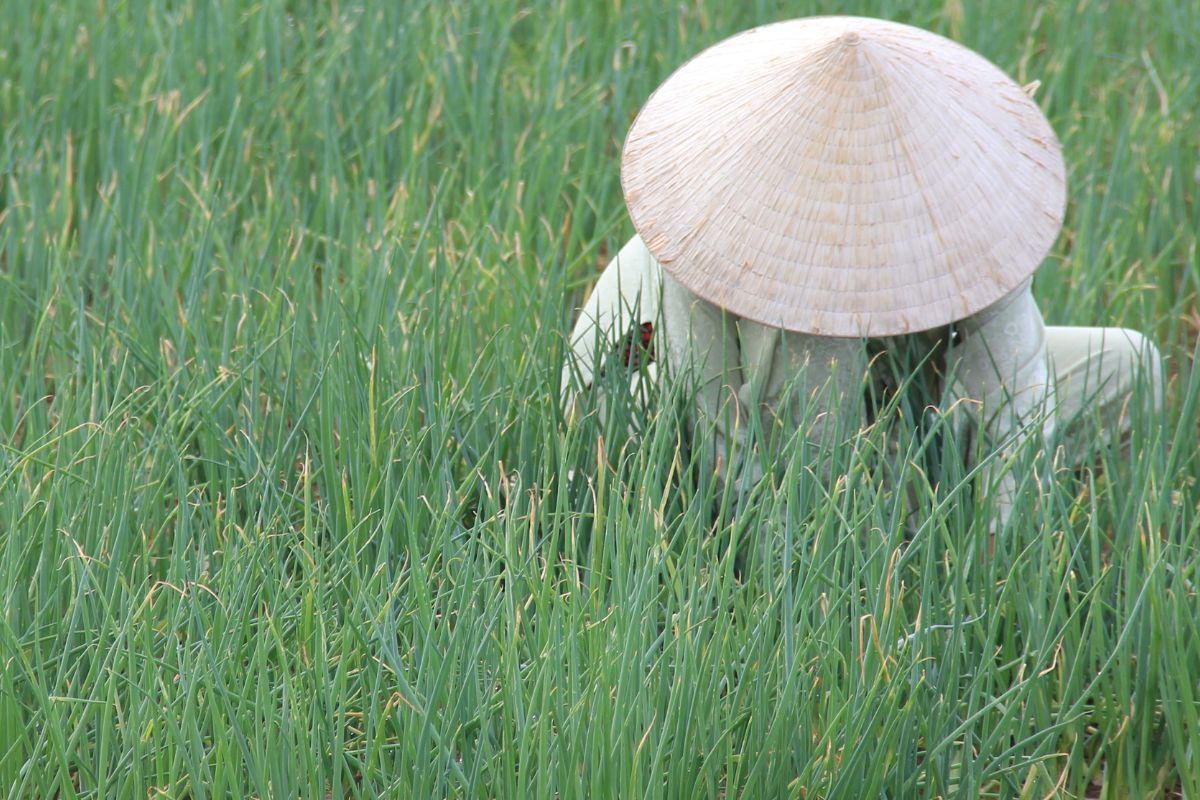
Tra Que is an organic vegetable farm that grows not only vegetables but also herbs (both culinary and medicinal) that have been central to Vietnamese culture for centuries. In addition to supplying local restaurants and residents, the village offers programs that teach visitors traditional techniques for hoeing soil, planting, and harvesting vegetables and herbs. These hands-on programs allow you to get your hands and feet dirty while sipping a glass of homegrown mint tea.
Cooking classes are also available here, where you can prepare and enjoy your own meal while watching a traditional music and apsara dance performance.
Tra Que also offers a special form of therapeutic massage using boiled Vietnamese herbs—an ancient treatment meant to help with aches and pains related to joints and bones, making it a perfect way to end a long day of walking.
Located only three kilometers from Hoi An, Tra Que is easily accessible. While tours are available, the best option is to rent a bicycle and explore the country roads surrounded by rice paddies on your own.
9. Japanese Covered Bridge
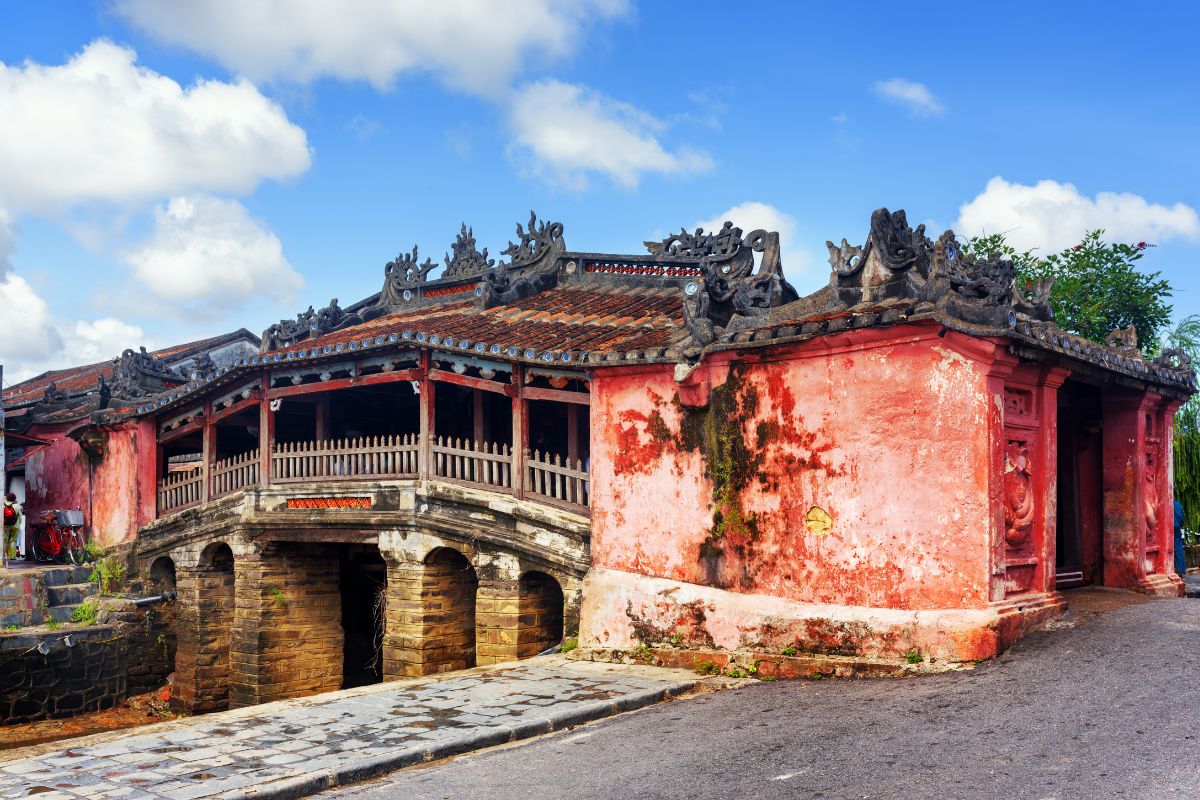
This 18-meter-long bridge, dating back almost four centuries, is one of Hoi An’s most famous landmarks—though it’s small enough that you could easily miss it if you weren’t looking for it.
While the bridge’s architectural style is distinctly Japanese, Chinese symbols and weathered statues of astrological animals have been added to the arches over the years to commemorate important dates.
The red details and pagoda-like roof made of lacquered wood are a mix of styles and look particularly stunning at night, when the lights from the surrounding buildings reflect on the water and the structure.
A UNESCO World Heritage site since 1999, the pedestrian bridge leads directly to a small temple dedicated to Tran Vo Bac De, the Taoist God of weather, who protects believers during earthquakes and floods. Given that this area of Hoi An is prone to floods (some of which have damaged the bridge in the past), the temple’s location is particularly relevant.
The bridge is part of the Old Town protected area, which requires a ticket for access.
10. Quan Cong Temple
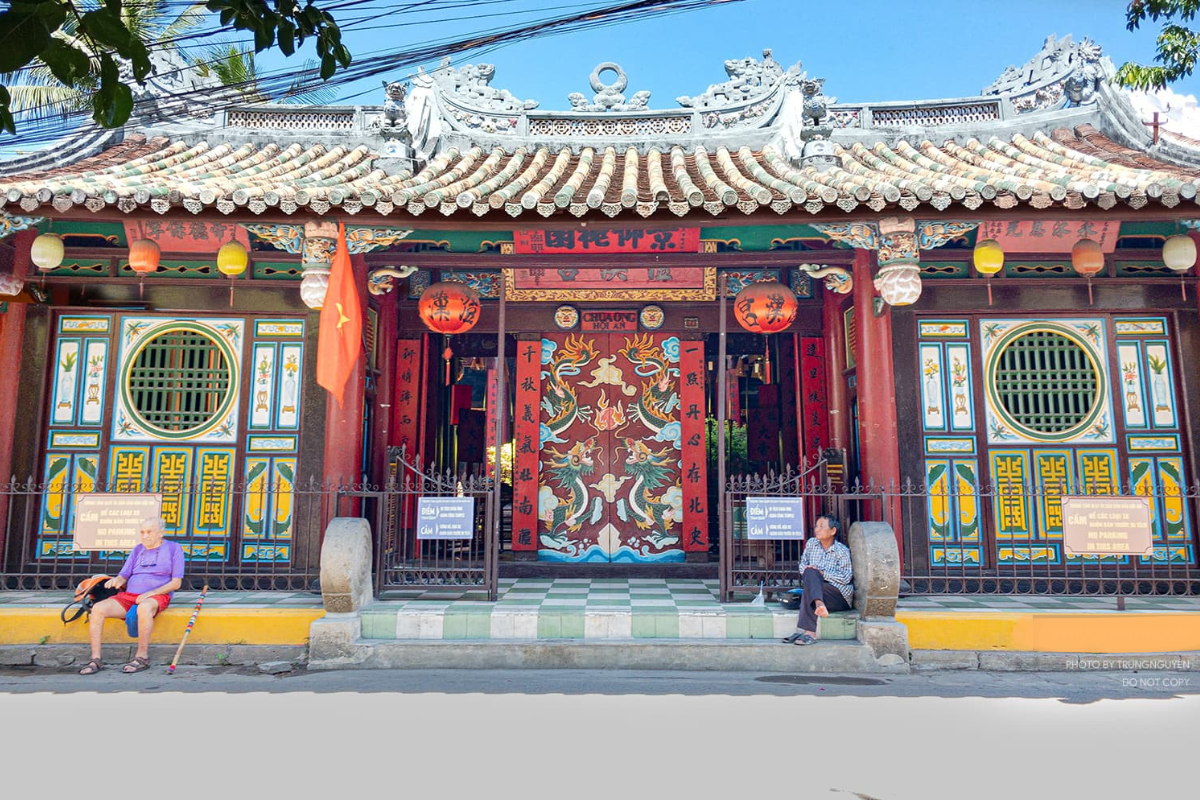
This unique temple, dedicated not to a god or goddess but to a general, dates back to the 17th century and features elaborate décor. It has been recognized as a National Historic and Cultural Site.
General Quan Cong, born around the year 196 during the Eastern Han dynasty, is remembered as a courageous military leader and protector of the people, aiding during famines and providing shelters for refugees escaping poverty in central China. Today, his memory is honored in this temple with a three-meter-tall papier-mâché statue with red skin and golden eyes.
Visitors enter the temple grounds through a massive Chinese gate decorated in bright colors. Inside the temple, poems about loyalty and righteousness adorn the walls.
11. Street Markets
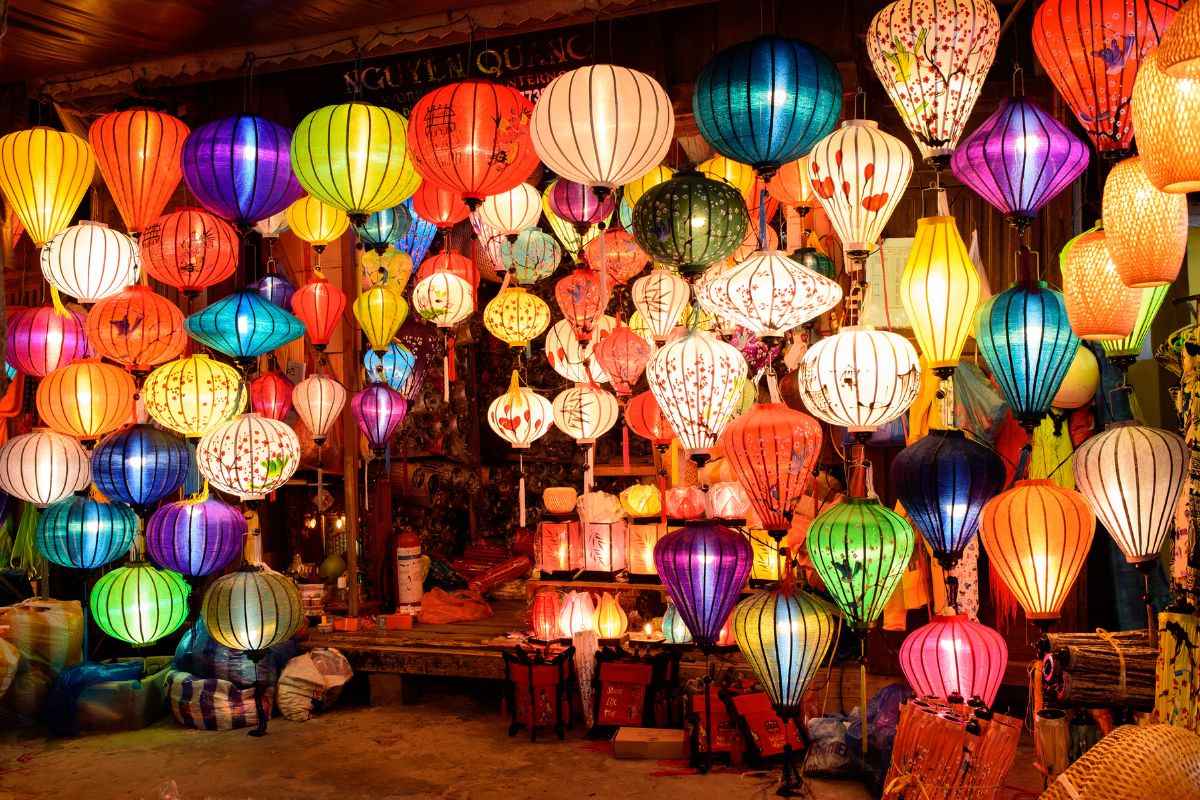
Hoi An markets, like most Vietnamese markets, are noisy, crowded, and a bit chaotic—but that’s all part of their charm. Whether you want to see how the locals shop, pick up some souvenirs, or try some of the best local food, a visit to one of the city markets should be on your must-do list.
Hoi An’s Central Market near the river is the largest and busiest market, frequented by both locals and tourists. In addition to produce, fresh fish, and ready-made food, this market also sells clothes, souvenirs, and handicrafts.
Tiger Market is a smaller version of an everything market, including extras like homewares and second-hand products—a sort of flea market great for discovering little gems.
For the best souvenirs, nothing beats the Night Market, with many stalls selling Hoi An’s signature silk and paper lamps, as well as some of the best street food you’ll taste in Vietnam.
12. Tan Ky Old House
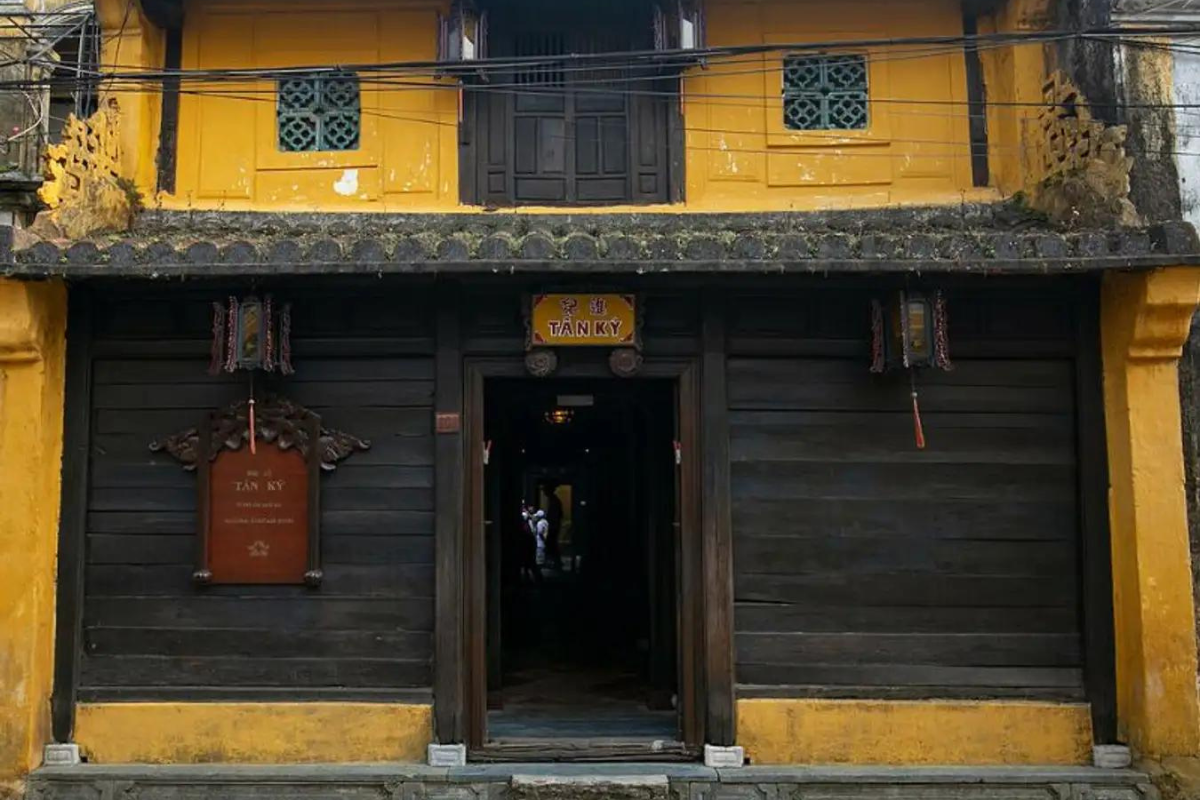
Built in 1741 as a merchant’s home, this wooden building (constructed without using a single nail) features both Japanese and Chinese design influences—two cultures that had a strong presence in Hoi An at the time.
The interior of the home is beautifully decorated with poems written on mother-of-pearl hangings and original Bat Trang bricks, while the balcony showcases stunning hand-carved woods.
While the home itself belonged to a family, the back of the house—which opens right over the river—was rented to merchants who needed a place to dock when arriving with goods via boat.
Today, the house is a stunning testament to the beauty of yesteryear. Original lacquered boards containing sayings (such as “Keep the mind to always be quiet”) are still on the walls, and much of the original 18th-century antiques remain in the house.
13. Hoi An Impressions Theme Park
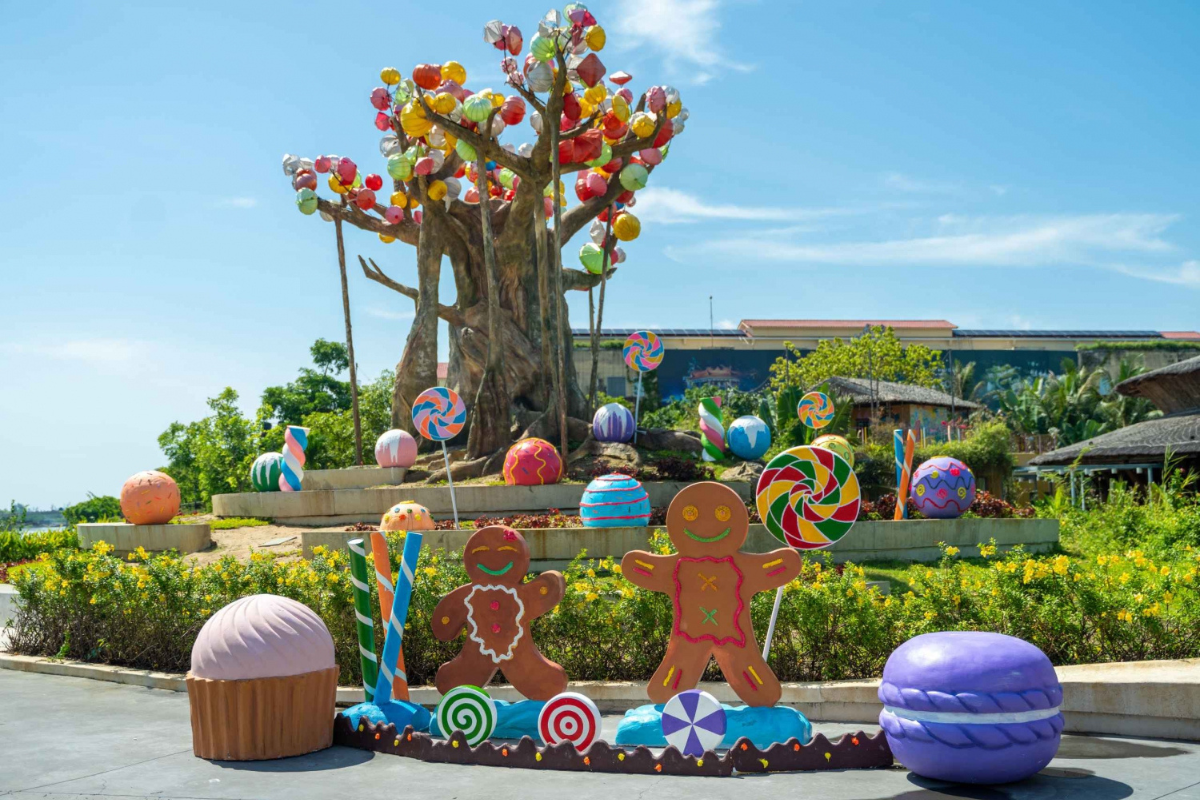
As the first cultural theme park in the country (and one of the first in Asia), Hoi An Impressions Theme Park brings Hoi An’s history and cultural legacy to life.
The park covers 10 hectares, featuring reproductions of ancient architecture, Buddhist temples, artisan villages, and even a small-scale port. But it’s the people and live shows—which take place on the streets throughout the park—that make this place so magical.
See ancient folktales played out through theater and dance, join traditional games being played in random corners, or take part in arts and craft workshops so you can leave with your own paper lantern or pottery creation as a souvenir.
The main attraction here is the Memories Show, set on a 25,000-square-meter outdoor stage. With more than 500 performers, state-of-the-art lighting technology, and a grand story that transcends languages and cultures, this is a show that will leave you breathless.
